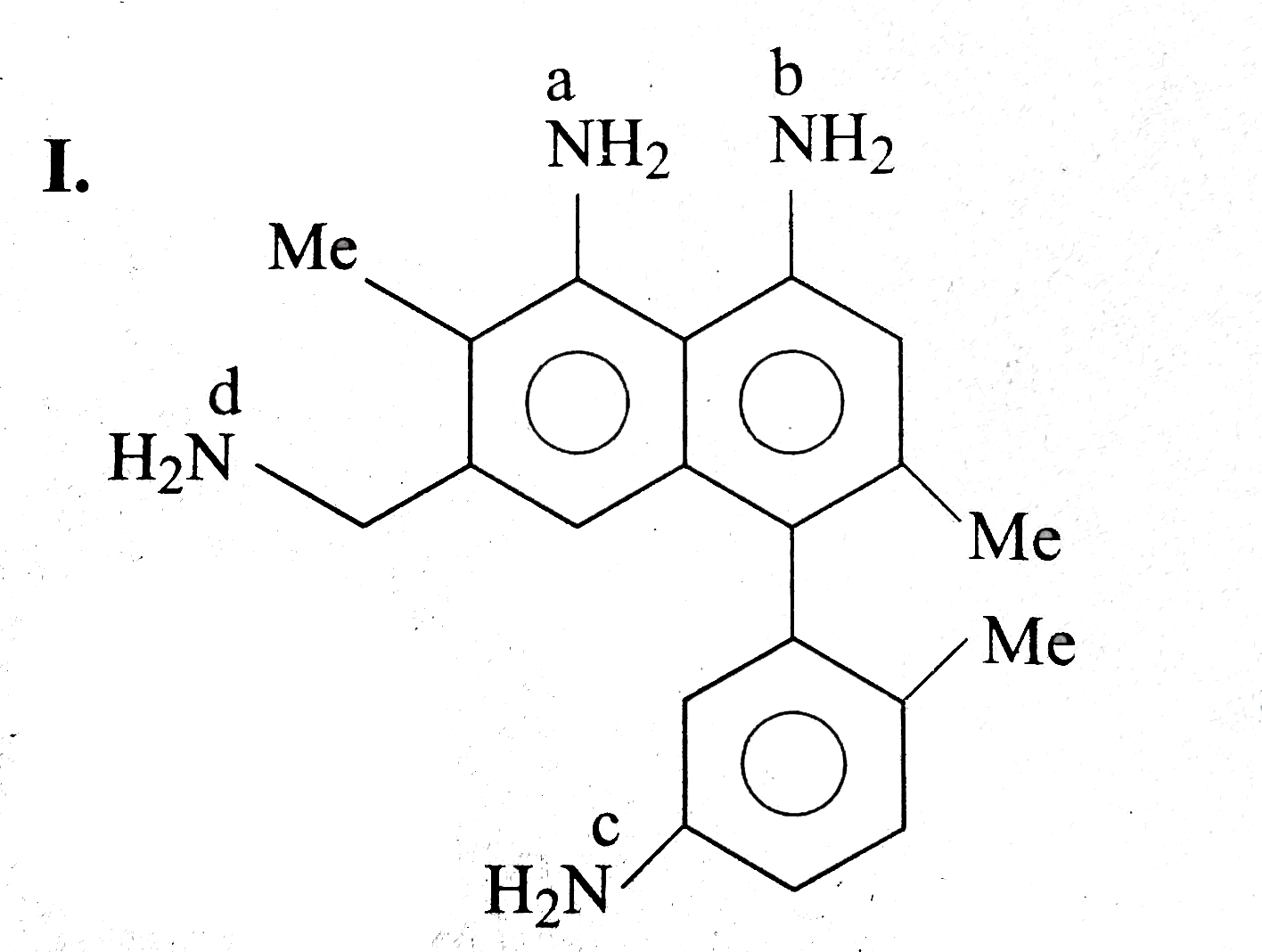Give the decreasing pH of aqueous solution of the following compounds :
a. NaCl , b. MgCl2 , c. AlCl3 , d. PCl5
NaCl_(2) lt MgCl_(2) lt AlCl_(3)
MgCl2<NaCl<AlCl3
AlCl3<MgCl2<NaCl
NaCl<AlCl3<MgCl2
The correct Answer is:A
To determine the decreasing pH of the aqueous solutions of the given compounds (NaCl, MgCl₂, AlCl₃, and PCl₅), we need to analyze the behavior of each compound in water, particularly focusing on the nature of their cations and the resulting acidity or basicity of the solutions.
1. Identify the Compounds and Their Ions:
- NaCl dissociates into Na⁺ and Cl⁻.
- MgCl₂ dissociates into Mg²⁺ and Cl⁻.
- AlCl₃ dissociates into Al³⁺ and Cl⁻.
- PCl₅ dissociates into PCl₄⁺ and Cl⁻.
2. Analyze the Cations:
- Na⁺: This ion does not hydrolyze in water and does not affect the pH significantly. It is neutral.
- Mg²⁺: This ion can hydrolyze to form a weak acid (Mg(OH)₂), slightly lowering the pH.
- Al³⁺: This ion hydrolyzes more strongly than Mg²⁺, forming Al(OH)₃, which is a stronger acid than Mg(OH)₂, thus lowering the pH further.
- PCl₄⁺: This ion is a strong acid and will significantly lower the pH of the solution.
3. Determine the pH Order:
- Since Na⁺ is neutral, it will have the highest pH.
- Mg²⁺ will lower the pH slightly compared to NaCl.
- Al³⁺ will lower the pH more than Mg²⁺.
- PCl₄⁺ will result in the lowest pH due to its strong acidic nature.
4. Final Order of Decreasing pH:
- NaCl > MgCl₂ > AlCl₃ > PCl₅
Conclusion:
The decreasing order of pH for the aqueous solutions of the given compounds is:
- NaCl > MgCl₂ > AlCl₃ > PCl₅
- NaCl dissociates into Na⁺ and Cl⁻.
- MgCl₂ dissociates into Mg²⁺ and Cl⁻.
- AlCl₃ dissociates into Al³⁺ and Cl⁻.
- PCl₅ dissociates into PCl₄⁺ and Cl⁻.
- Na⁺: This ion does not hydrolyze in water and does not affect the pH significantly. It is neutral.
- Mg²⁺: This ion can hydrolyze to form a weak acid (Mg(OH)₂), slightly lowering the pH.
- Al³⁺: This ion hydrolyzes more strongly than Mg²⁺, forming Al(OH)₃, which is a stronger acid than Mg(OH)₂, thus lowering the pH further.
- PCl₄⁺: This ion is a strong acid and will significantly lower the pH of the solution.
- Since Na⁺ is neutral, it will have the highest pH.
- Mg²⁺ will lower the pH slightly compared to NaCl.
- Al³⁺ will lower the pH more than Mg²⁺.
- PCl₄⁺ will result in the lowest pH due to its strong acidic nature.
- NaCl > MgCl₂ > AlCl₃ > PCl₅
The decreasing order of pH for the aqueous solutions of the given compounds is:
- NaCl > MgCl₂ > AlCl₃ > PCl₅
Topper's Solved these Questions
- BOOK - NCERT FINGERTPS ENGLISHCHAPTER - CHEMICAL BONDING & MOLECULAR STRUCTUREEXERCISE - HIGHER ORDER THINKING SKILLS10videos
CHEMICAL BONDING & MOLECULAR STRUCTURE
- BOOK - NCERT FINGERTPS ENGLISHCHAPTER - CHEMICAL BONDING & MOLECULAR STRUCTUREEXERCISE - EXEMPLAR PROBLEMS14videos
CHEMICAL BONDING & MOLECULAR STRUCTURE
- BOOK - NCERT FINGERTPS ENGLISHCHAPTER - CLASSIFICATION OF ELEMENTS AND PERIODICITY EXERCISE - Assertion And Reason15videos
CLASSIFICATION OF ELEMENTS AND PERIODICITY
Similar Questions
Give the decreasing order of basic character at a,b,c,d in the following compounds :
 . View Solution
. View SolutionGive the increasing order of melting points of the following compounds:
a. I. NaF , II. NaCl , III. NaBr, IV. NaI
b. I. CaI2 , II. CaBr2 , III. CaCl2 , IV. CaF2 , V. BeCl2
d. I. NaCl , II. MgCl2 , III. AlCl3
e. I. CCl4 , II. BCl3 , III. BeCl2 , IV. LiClView Solution
Knowledge Check
- Question 1 - Select One
Which one is a covalent compound?
(a)HCl
(b)NaCl
(c)KCl
(d)MgCl2AHCIBNaClCKCIDMgCl2
Explain why the following compounds behave as Lewis acids ?
(a) BCl3
(b) AlCl3View SolutionThe pH values of aqueous solutions of which of the following compounds does not change on dilution?
View SolutionFind the ratio by mass of the combining elements in the following compounds.
a) CaCO3
b) MgCl2
c) H2SO4, d) C2H5OH
e) NH3, f) Ca(OH)2View SolutionpH of an aqueous NaCl solution at 50∘C should be :
View SolutionWhich of the following compounds is most basic?
(a)NaCl
(b)Na2CO3
(c)CH3COONa
(d)NH4ClView SolutionGive the decreasing order of the stabilities of the following free radicals :
(a) Ph.CHPh
(b) Ph.CHCH=CH2
( c) Me.CHMe
(d) Ph.CHMe
( e) MeCH=CHCH2.CH2
(f) Et−.C−Me2.View SolutionWrite the cations and anions present (if any) in the following compounds?
a) CH3COONa
b) NaCl
c) H2
d) NH4NO3View Solution

